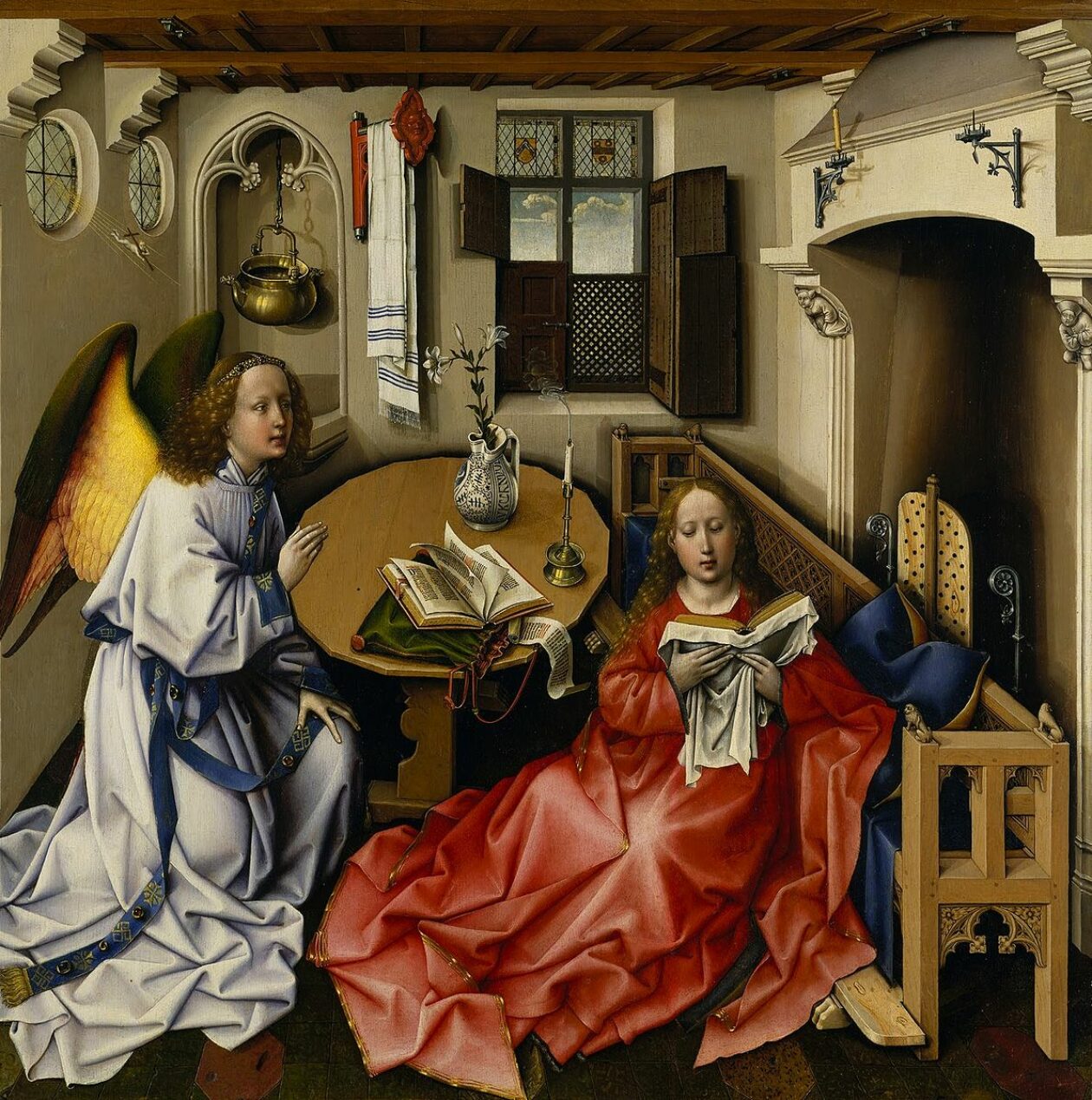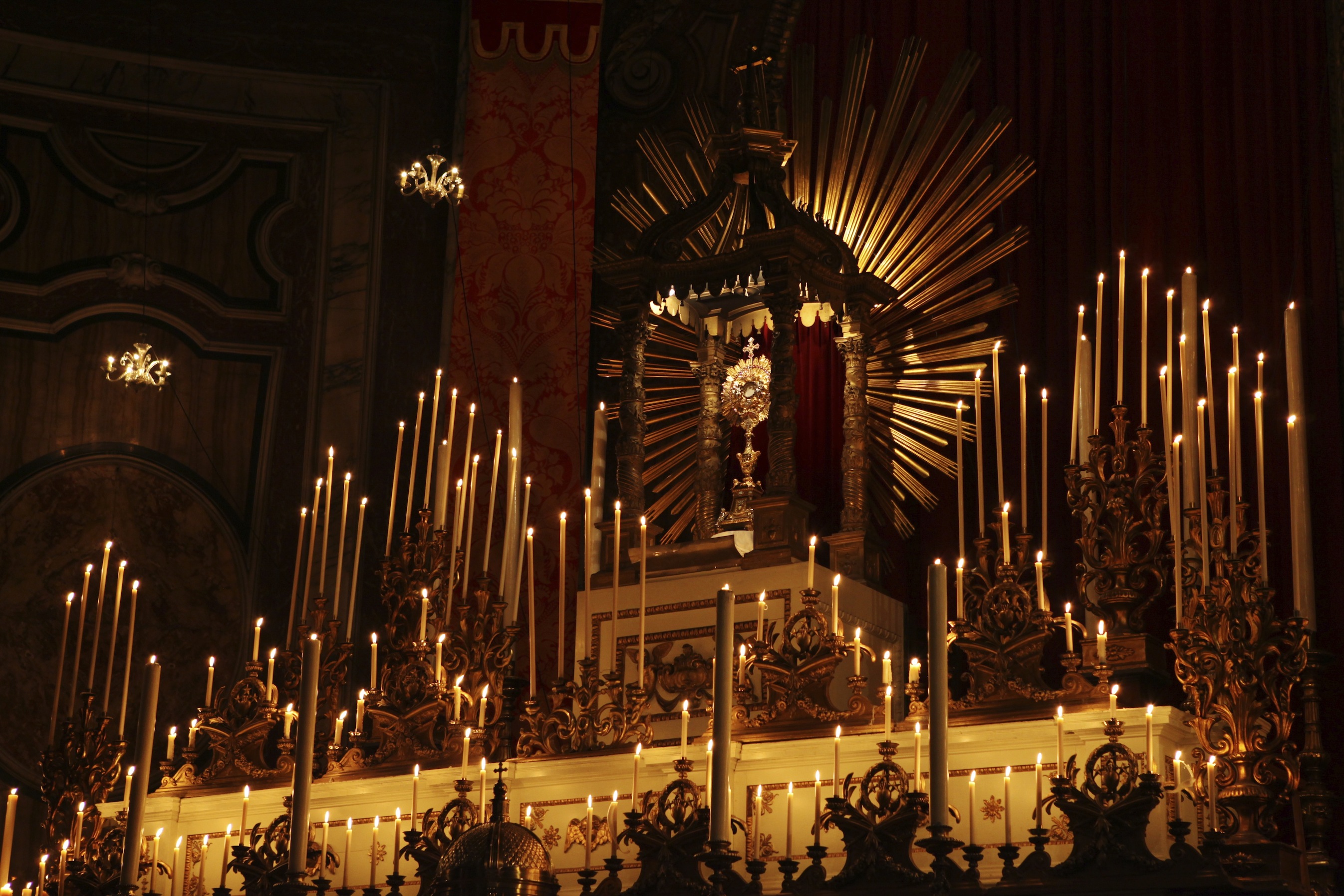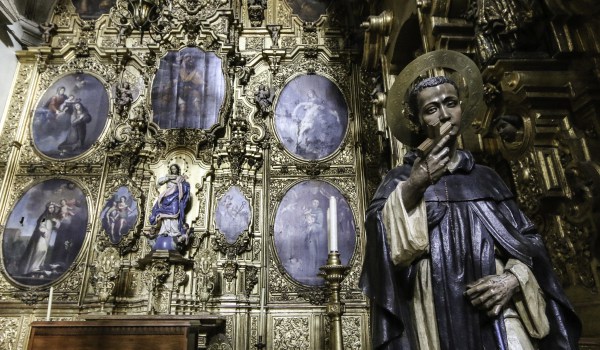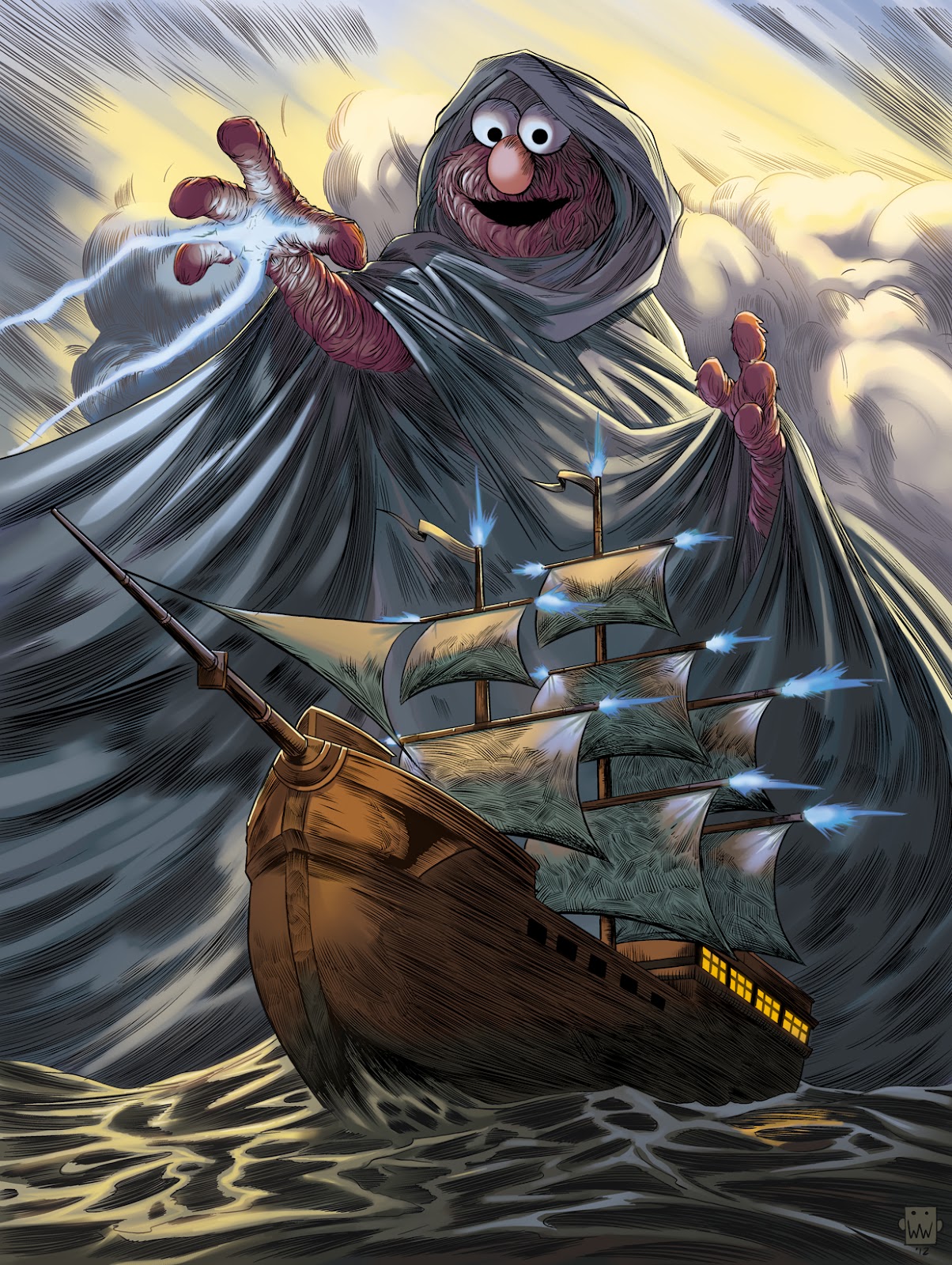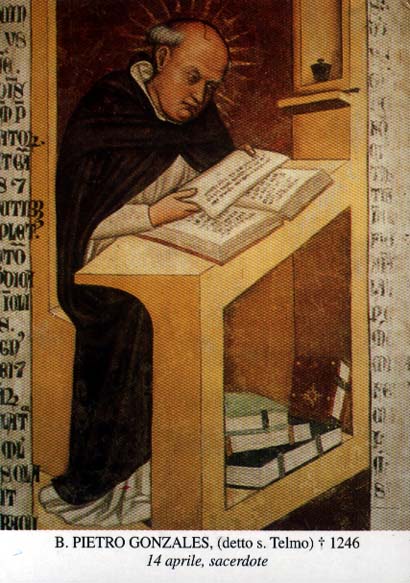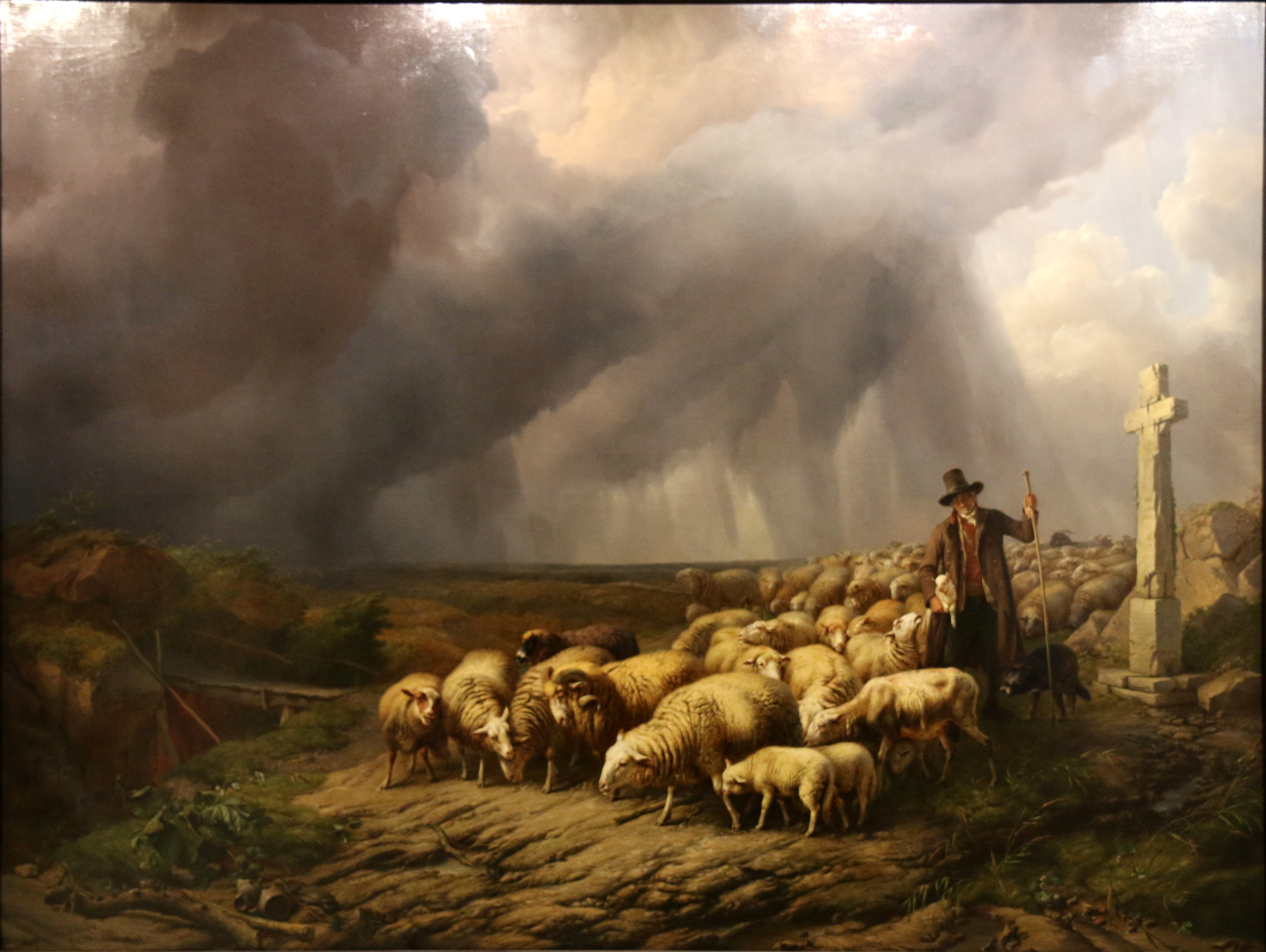
“Though father and mother forsake me, the LORD will receive me.” -Ps 27:10
In our society, where medical testing can be done to assure that only children without defects are born, those who are born with handicaps are often regarded as “tragic” oversights. In this light, the “unwanted” of the world have a patron saint in a medieval woman who was born a crippled, blind and hunchbacked dwarf.
St Margaret of Castello, a Third Order Dominican, like me, was born in the fourteenth century in Metola, Italy to noble parents who wanted a son. When the news was brought to the new mother that her newborn daughter was a blind, hunchbacked dwarf, both parents were horrified. Little Margaret was kept in a secluded section of the family castle in the hopes that her existence would be kept secret. However, when she was about six years old, she accidentally made her presence known to a guest. Determined to keep her out of the public eye, her father had a room without a door built onto the side of the parish church and walled Margaret inside this room. Here she lived until she was sixteen, never being allowed to come out. Her food and other necessities were passed in to her through a window. Another window into the church allowed her to hear Mass and receive Holy Communion. The parish priest became a good friend, and took upon himself the duty to educate her. He was amazed at her docility and the depth of her spiritual wisdom.

-where Margaret was held prisoner from age 6, please click on the image for greater detail.

-please click on the image for greater detail
When Margaret was sixteen years old, her parents heard of a shrine in Citta di Castello, Italy, where many sick people were cured. They made a pilgrimage to the shrine so that she could pray for healing. However, Margaret, open to the will of God, was not healed that day, or the next, so her parents callously abandoned her in the streets of the town and left for home, never to see her again. At the mercy of the passersby, Margaret had to beg her food.
Margaret was passed from family to family until she was adopted by a kindly peasant woman named Grigia, who had a large family of her own. Margaret’s natural sweetness and goodness soon made themselves felt, and she more than repaid the family for their kindness to her. She was an influence for good in any group of children. She stopped their quarrels, heard their catechism, told them stories, taught them Psalms and prayers. Busy neighbors were soon borrowing her to soothe a sick child or to establish peace in the house.

-St Margaret of Castello statue, Saint Patrick Catholic Church, Columbus, OH, where there is a shrine to her. Please click on the image for greater detail.
Her reputation for holiness was so great that a community of sisters in the town asked for her to become one of them. Margaret went happily to join them, but, unfortunately, there was little fervor in the house. The little girl who was so prayerful and penitential was a reproach to their lax lives, so Margaret returned to Grigia, who gladly welcomed her home.
Later, Margaret was received as a Dominican Tertiary and clothed with the religious habit. Grigia’s home became the rendezvous site of troubled souls seeking Margaret’s prayers. She said the Office of the Blessed Virgin and the entire Psalter by heart, and her prayers had the effect of restoring peace of mind to the troubled.
Denied earthly sight, Margaret was favored with heavenly visions. “Oh, if you only knew what I have in my heart!” she often said. The mysteries of the rosary, particularly the joyful mysteries, were so vivid to her that her whole person would light up when she described the scene. She was often in ecstasy, and, despite great joys and favors in prayer, she was often called upon to suffer desolation and interior trials of frightening sorts. The devil tormented her severely at times, but she triumphed over these sufferings.
 , -please click on the image for greater detail.
, -please click on the image for greater detail.
A number of miracles were performed by St Margaret. On one occasion, while she was praying in an upper room, Grigia’s house caught fire, and she called to Margaret to come down. The blessed, however, called to her to throw her cloak on the flames. This she did, and the blaze died out. At another time, she cured a sister who was losing her eyesight.
Beloved by her adopted family and by her neighbors and friends, Margaret died at the early age of 33. From the time of her death, her tomb in the Dominican church was a place of pilgrimage. Her body, even to this day, is incorrupt. More than 200 miracles have been credited to her intercession after her death. She was beatified in 1609. Thus the daughter that nobody wanted is one of the glories of the Church.
After her death, the fathers received permission to have her heart opened. In it were three pearls, having holy figures carved upon them. They recalled the saying so often on the lips of Margaret: “If you only knew what I have in my heart!”

-relic of Bl Margaret of Castello, Saint Patrick Catholic Church, Columbus, OH, where there is a shrine to her. Please click on the image for greater detail.
W. R. Bonniwell writes, “Her cheerfulness, based on her trust in God’s love and goodness, was extraordinary. She became a Dominican tertiary and devoted herself to tending the sick and the dying” as well as prisoners in the city jail.
How does Margaret’s story apply to our times? Her parents wanted a boy, and if not a boy, at least a perfect girl. In the eyes of the world, she was useless, and what right do useless people have to live? St Margaret helped innumerable others by her life and her good deeds, finding holiness by uniting her sufferings to Christ’s. And now, some 670 years after her death, she teaches us valuable lessons by her very being.
St Margaret lived a life of hope and faith, practicing heroic charity, though little was shown her in return. She came from a home where she was deprived, not because her parents had no wealth, but because they valued their material wealth and status more than their spiritual treasures.
 -please click on the image for greater detail.
-please click on the image for greater detail.
Deprived of all human companionship, Margaret learned to embrace her Lord in solitude. Instead of becoming bitter, she forgave her parents for their ill treatment of her and treated others as well as she could. Her cheerfulness stemmed from her conviction that God loves each person infinitely, for He has made each person in His own image and likeness. This same cheerfulness won the hearts of the poor of Castello, and they took her into their homes for as long as their purses could afford. She passed from house to house in this way, “a homeless beggar being practically adopted by the poor of a city” (Bonniwell, 1955).
St Margaret died on April 13, 1320 at the age of 33. More than 200 miracles have been credited to her intercession since her death. She was beatified in 19 October 1609. She was canonized 24 April 2021. Thus, the daughter that nobody wanted is now one of the glories of the Church. Her body remains incorrupt.
First Vespers:
Ant. This is a wise Virgin whom the Lord found watching, who took her lamp and oil, and when the Lord came she entered with Him into the marriage feast. (P.T. Alleluia.)
V. Pray for us St Margaret. (P.T. Alleluia.)
R. That we may be made worthy of the promises of Christ. (P.T. Alleluia.)
Lauds:
Ant. Come, O my chosen one, and I will place my throne in thee, for the King hath exceedingly desired thy beauty. (P.T. Alleluia.)
V. Virgins shall be led to the King after her. (P.T. Alleluia.)
R. Her companions shall be presented to Thee. (P.T. Alleluia.)
Second Vespers:
Ant. She has girded her loins with courage and hath strengthened her arm; therefore shall her lamp not be put out forever. (P.T. Alleluia.)
V. Pray for us Blessed Margaret. (P.T. Alleluia.)
R. That we may be made worthy of the promises of Christ. (P.T. Alleluia.)
Prayer:
Let us Pray: O God, Who wast pleased that St Margaret, Virgin, should be born blind, that, the eye of her heart being inwardly enlightened, she might continually contemplate Thee alone, be Thou the light of our eyes, that we may have no part in the darkness of this world, but be enabled to arrive at the land of eternal brightness Through Christ our Lord. Amen.
Prayer to Margaret of Castello
Compassionate God, You gave Your divine light to St Margaret who was blind from birth, that with the eye of her heart she might contemplate You alone. Be the light of our eyes that we may turn from what is evil and reach the home of never-ending light. We ask this through our Lord Jesus Christ, Your Son, Who lives and reigns with You and the Holy Ghost, one God, for ever and ever. Amen.
– General Calendar of the Order of Preachers
Novena to the St Margaret of Castello
First Day:
O St Margaret of Castello, in embracing your life just as it was, you gave us an example of resignation To the will of God. In so accepting God’s will, you knew that you would grow in virtue, glorify God, save your own soul, and help the souls of your neighbors. Obtain for me the grace to recognize the will of God in all that may happen to me in my life and so resign myself to it. Obtain for me also the special favor, which I now ask, through your intercession with God.
Let us pray…
O God by whose will the blessed virgin, Margaret, was blind from birth, that the eyes of her mind being inwardly enlightened she might think without ceasing on You alone; be the light of our eyes, that we may be able to flee the shadows in this world, and reach the home of never-ending light. We ask this through Christ our Lord. Amen.
Jesus, Mary, Joseph, glorify your servant St Margaret, by granting the favor we so ardently desire. This we ask in humble submission To God’s Will, For His honor and glory and the salvation of souls.
Our Father…
Hail Mary…
Glory Be…
Second Day:
O St Margaret of Castello, in reflecting so deeply upon the sufferings and death of our Crucified Lord, you learned courage and gained the grace to bear your own afflictions. Obtain for me the grace and courage that I so urgently need so as to be able to bear my infirmities and endure my afflictions in union with our suffering Savior. Obtain for me also the special favor which I now ask through your intercession with God.
Let us pray…
O God by whose will the blessed virgin, Margaret, was blind from birth, that the eyes of her mind being inwardly enlightened she might think without ceasing on You alone; be the light of our eyes, that we may be able to flee the shadows in this world,
and reach the home of never-ending light. We ask this through Christ our Lord. Amen.
Jesus, Mary, Joseph, glorify your servant St Margaret, by granting the favor we so ardently desire. this we ask in humble submission to God’s will, for His honor and glory and the salvation of souls.
Our Father…
Hail Mary…
Glory Be…
Third Day:
O St Margaret of Castello, your love for Jesus in the Blessed Sacrament was intense and enduring. It was here in intimacy with the Divine Presence that you found spiritual strength to accept suffering, to be cheerful, patient, and kindly towards others. Obtain for me the grace that I may draw from this same source, as from an exhaustible font, the strength whereby I may be kind and understanding of everyone despite whatever pain or discomfort may come my way. Obtain this for us through your intercession with God.
Let us pray…
O God by whose will the blessed virgin, Margaret, was blind from birth, that the eyes of her mind being inwardly enlightened she might think without ceasing on You alone; be the light of our eyes, that we may be able to flee the shadows in this world,
and reach the home of never-ending light. We ask this through Christ our Lord. Amen.
Jesus, Mary, Joseph, glorify your servant St Margaret, by granting the favor we so ardently desire. this we ask in humble submission to God’s will, for His honor and glory and the salvation of souls.
Our Father…
Hail Mary…
Glory Be…
Fourth Day:
O St Margaret of Castello, you unceasingly turned to God in prayer with confidence and trust in His fatherly love. It was only through continual prayer that you were enabled to accept your misfortunes, to be serene, patient, and at peace. Obtain for me the grace to persevere in my prayer, confident that God will give me the help to carry whatever cross comes into my life. Obtain for me also the special favor which I now ask through your intercession with God.
Let us pray…
O God by whose will the blessed virgin, Margaret, was blind from birth, that the eyes of her mind being inwardly enlightened she might think without ceasing on You alone; be the light of our eyes, that we may be able to flee the shadows in this world, and reach the home of never-ending light. We ask this through Christ our Lord. Amen.
Jesus, Mary, Joseph, glorify your servant St Margaret, by granting the favor we so ardently desire. this we ask in humble submission to God’s will, for His honor and glory and the salvation of souls.
Our Father…
Hail Mary…
Glory Be…
Fifth Day:
O St Margaret of Castello, in imitation of the Child Jesus, who was subject to Mary and Joseph, you obeyed your father and mother, overlooking their unnatural harshness. Obtain for me that same attitude of obedience toward all those who have legitimate authority over me, most especially toward the Holy Roman Catholic Church. Obtain for me also the special favor which I now ask through your intercession with God.
Let us pray…
O God by whose will the blessed virgin, Margaret, was blind from birth, that the eyes of her mind being inwardly enlightened she might think without ceasing on You alone; be the light of our eyes, that we may be able to flee the shadows in this world, and reach the home of never-ending light. We ask this through Christ our Lord. Amen.
Jesus, Mary, Joseph, glorify your servant St Margaret, by granting the favor we so ardently desire. this we ask in humble submission to God’s will, for His honor and glory and the salvation of souls.
Our Father…
Hail Mary…
Glory Be…
Sixth Day:
O St Margaret of Castello, your miseries taught you better than any teacher the weakness and frailty of human nature. Obtain for me the grace to recognize my human limitations and to acknowledge my utter dependence upon God. Acquire for me that abandonment which leaves me completely at the mercy of God. Obtain for me also the special favor which I now ask through your intercession with God.
Let us pray…
O God by whose will the blessed virgin, Margaret, was blind from birth, that the eyes of her mind being inwardly enlightened she might think without ceasing on You alone; be the light of our eyes, that we may be able to flee the shadows in this world, and reach the home of never-ending light. We ask this through Christ our Lord. Amen.
Jesus, Mary, Joseph, glorify your servant St Margaret, by granting the favor we so ardently desire. this we ask in humble submission to God’s will, for His honor and glory and the salvation of souls.
Our Father…
Hail Mary…
Glory Be…
Seventh Day:
O St Margaret of Castello, you could have so easily become discouraged and bitter; but, instead, you fixed your eyes on the suffering Christ and there you learned from Him the redemptive value of suffering . How to offer your pains and aches, in reparation for sin and for the salvation of souls. Obtain for me the grace to learn how to endure my sufferings with patience. Obtain for me also the special favor which I now ask through your intercession with God.
Let us pray…
O God by whose will the blessed virgin, Margaret, was blind from birth, that the eyes of her mind being inwardly enlightened she might think without ceasing on You alone; be the light of our eyes, that we may be able to flee the shadows in this world, and reach the home of never-ending light. We ask this through Christ our Lord. Amen.
Jesus, Mary, Joseph, glorify your servant St Margaret, by granting the favor we so ardently desire. this we ask in humble submission to God’s will, for His honor and glory and the salvation of souls.
Our Father…
Hail Mary…
Glory Be…
Eighth Day:
O St Margaret of Castello, how it must have hurt when your parents abandoned you! Yet you learned from this that all earthly love and affection, even for those who are closest, must be sanctified. And so, despite everything, you continued to love your parents – but now you loved them in God. Obtain for me the grace that I might see all my human loves and affections in their proper perspective… in God and for God. Obtain for me also the special favor which I now ask through your intercession with God.
Let us pray…
O God by whose will the blessed virgin, Margaret, was blind from birth, that the eyes of her mind being inwardly enlightened she might think without ceasing on You alone; be the light of our eyes, that we may be able to flee the shadows in this world, and reach the home of never-ending light. We ask this through Christ our Lord. Amen.
Jesus, Mary, Joseph, glorify your servant St Margaret, by granting the favor we so ardently desire. this we ask in humble submission to God’s will, for His honor and glory and the salvation of souls.
Our Father…
Hail Mary…
Glory Be…
Ninth Day:
O St Margaret of Castello, through your suffering and misfortune, you became sensitive to the sufferings of others. Your heart reached out to everyone in trouble – the sick, the hungry, the dying prisoners. Obtain for me the grace to recognize Jesus in everyone with whom I come into contact, especially in the poor, the wretched, the unwanted! Obtain for me also the special favor which I now ask through your intercession with God.
Let us pray…
O God by whose will the blessed virgin, Margaret, was blind from birth, that the eyes of her mind being inwardly enlightened she might think without ceasing on You alone; be the light of our eyes, that we may be able to flee the shadows in this world, and reach the home of never-ending light. We ask this through Christ our Lord. Amen.
Jesus, Mary, Joseph, glorify your servant St Margaret, by granting the favor we so ardently desire. this we ask in humble submission to God’s will, for His honor and glory and the salvation of souls.
Our Father…
Hail Mary…
Glory Be…
Prayer
O my God, I thank you for having given St Margaret of Castello to the world as an example of the degree of holiness that can be attained by anyone who truly loves you, regardless of physical abnormalities. In today’s perverted culture, Margaret would have, most likely, never been born; death through abortion being preferable to life, especially life in an ugly distorted twisted body. But Your ways are not the world’s ways… And so it was Your Will that Margaret would be born into the world with just such a malformed body. It is Your way that uses our weakness to give testimony to Your power. Margaret was born blind, so as to see You more clearly; a cripple, so as to lean on You completely; dwarfed in physical posture, so as to become a giant in the spiritual order; hunch-backed, so as to more perfectly resemble the twisted, crucified body of Your Son. Margaret’s whole life was an enactment of the words expressed by Paul: “So I shall be very happy to make my weaknesses my special boast so that the power of Christ may stay over me and that is why I am content with my weaknesses, and with insults, hardships, persecutions and the agonies I go through for Christ’s sake. For it is when I am weak that I am strong.” (2 Cor 12:10). I beseech you, O God, to grant through the intercession Of Blessed Margaret of Castello, that all the handicapped … and who among us is not?… all rejected, all unwanted of the world may make their weaknesses their own special boast so that your power may stay over them now and forever. Amen.


-Dominican Sisters look at the to-scale statue of Blessed Margaret of Castello
Castello Nursing Simulation Learning Center at Saint Thomas West Hospital, the state-of-the-art nursing simulation laboratory, named after St Margaret of Castello, O.P. (1287–1320). The Castello Center consists of 24 simulated patient care settings, including critical care, neonatal care, residential care facilities, hospice, and home health.
UPDATE 9/19/2021:
On April 24 of this year, Pope Francis canonized a third-order Dominican, St. Margaret of Castello (1287–1320), by what is called equipollent canonization. This means that instead of waiting for a second miracle and then canonizing St. Margaret by a solemn declaration during a canonization mass, Pope Francis waived the requirement for a second miracle and canonized her by virtue of signing the decree. Since there was no canonization mass, a solemn mass will be celebrated today at the Church of St. Dominic in Città di Castello, Italy, where her body is buried. In honor of this occasion, one of our brothers has composed a Litany of St. Margaret of Castello. We publish it here with the hope that it will promote devotion to St. Margaret and will be an aid for the prayer of those who seek her powerful intercession.
+ + + + +
V. Lord, have mercy. R. Lord, have mercy.
V. Christ, have mercy. R. Christ, have mercy.
V. Lord, have mercy. R. Lord, have mercy.
V. Christ, hear us. R. Christ, hear us.
V. Christ, graciously hear us. R.Christ, graciously hear us.
God the Father of heaven, have mercy on us.
God the Son, Redeemer of the world, have mercy on us.
God the Holy Spirit, have mercy on us.
Holy Trinity, one God,
Holy Mary, pray for us.
Holy Mother of God,
Queen of the Most Holy Rosary,
St. Margaret of Castello, pray for us.
St. Margaret of Metola,
St. Margaret, spouse of the Lord Jesus,
St. Margaret, daughter of the Blessed Virgin Mary,
St. Margaret, devotee of St. Joseph,
St. Margaret, image of Holy Father Dominic,
St. Margaret, lustrous pearl of the Most High,*
St. Margaret, virginal lily of the Mantellate,**
St. Margaret, chosen vessel of Lady Poverty,
St. Margaret, ardent apostle of charity,
St. Margaret, pattern of Eucharistic piety,
St. Margaret, mirror of prayer and penance,
St. Margaret, model of mercy and compassion,
St. Margaret, patroness of the blind and the disabled,
St. Margaret, servant of the sick and the outcast,***
St. Margaret, comfort to the afflicted,
St. Margaret, relief to the abandoned,
St. Margaret, strength of the burdened,
St. Margaret, hope of the unwanted,
St. Margaret, shelter for the homeless,
St. Margaret, advocate for the aborted,
St. Margaret, blind but illumined by Christ,
St. Margaret, lame but animated by Christ,
St. Margaret, deformed but conformed to Christ,
St. Margaret, dwarfed but restored in Christ,
St. Margaret, wondrous heart of pearls,****
St. Margaret, incorruptible sign of salvation,
St. Margaret, glorious intercessor before the throne of God,
Lamb of God, you take away the sins of the world. Spare us, O Lord.
Lamb of God, you take away the sins of the world. Graciously hear us, O Lord.
Lamb of God, you take away the sins of the world. Have mercy on us.
Pray for us, St. Margaret of Castello, that we may be made worthy of the promises of Christ.
Let us pray.
O God, who made the virgin Saint Margaret of Castello strong by the power of Christ, grant, we pray, that, through her intercession, we may so boast in our weaknesses as to merit the grace of life eternal. Through our Lord Jesus Christ, your Son, who lives and reigns with you in the unity of the Holy Spirit, God, for ever and ever. Amen.
+ + + + +
Explanation of certain titles attributed to St. Margaret of Castello:
*The title “lustrous pearl of the Most High” is derived from Fr. Andrew Hofer’s beautiful hymn in honor of St. Margaret, O Lustrous Pearl in Heaven’s Light. (For those unaware, the name “Margaret” means “pearl.”) It also invokes the language of Luke 1:32, where the archangel Gabriel says of the child to be born of Mary, “He will be great and will be called Son of the Most High.”
**The title “virginal lily of the Mantellate” emphasizes the distinct privilege of St. Margaret as a virgin among the “Mantellate” (the name used for the third-order community she joined), which, at the time, consisted almost entirely of widows.
***The title “servant of the sick and the outcast” is taken from Sr. Mary Elizabeth O’Brien’s excellent book of the same name, Blessed Margaret of Castello: Servant of the Sick and the Outcast.
****The title “wondrous heart of pearls” alludes to the well-known testimony of others, who, after her death, found three pearls embedded within the heart of St. Margaret.
✠
Love,
Matthew
